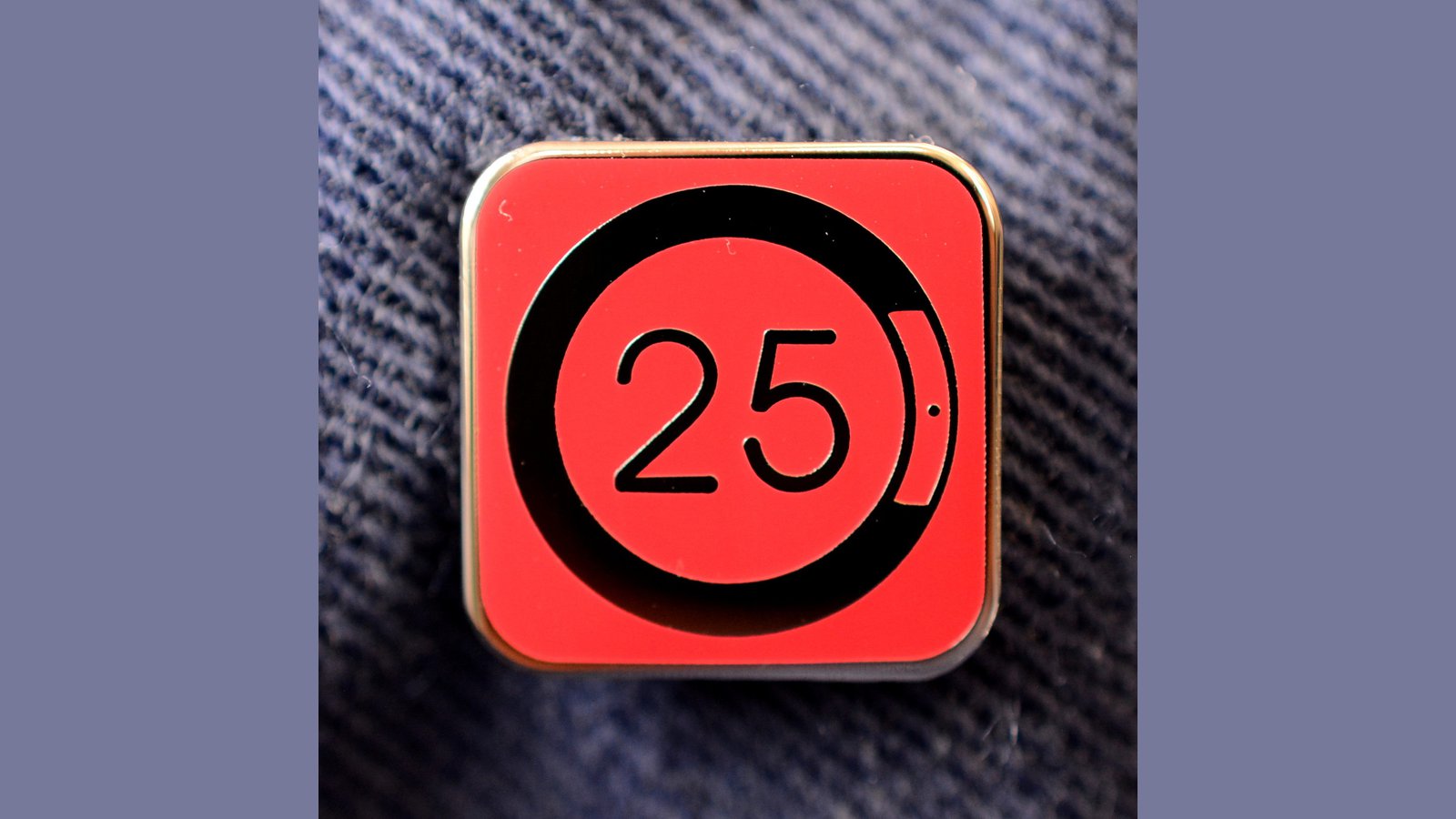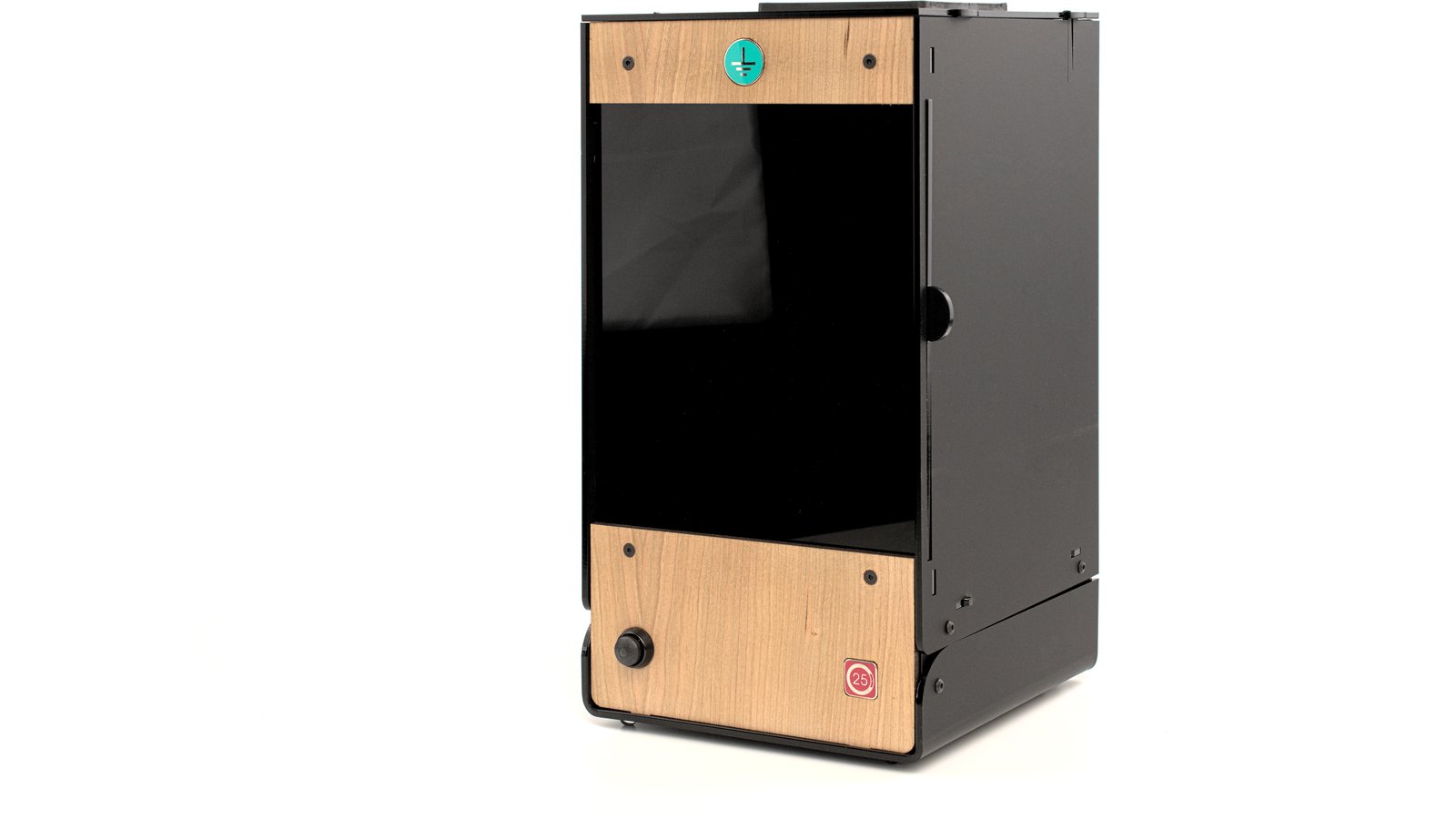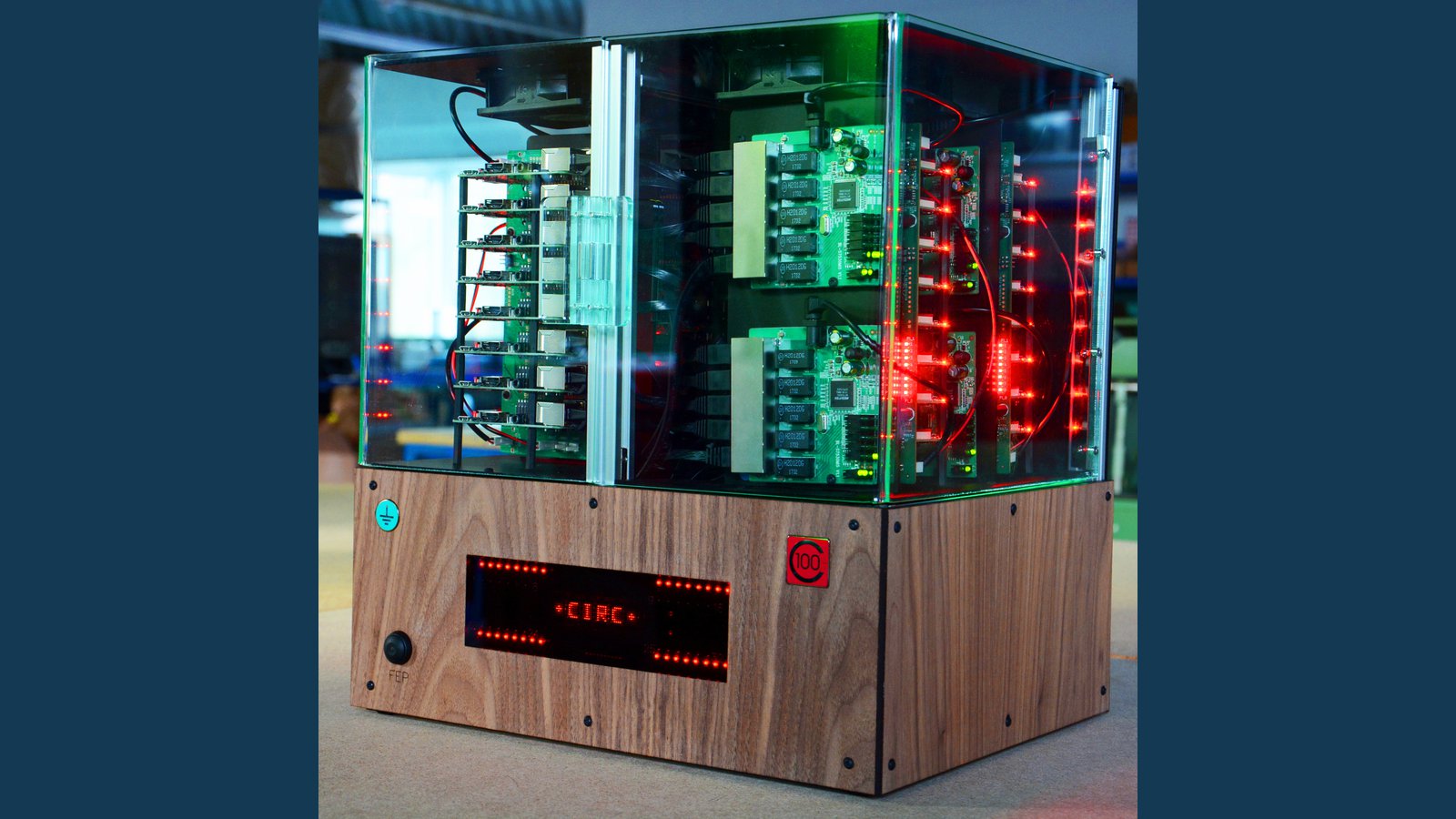Ground Electronics
Networking
KiCad
Ground Electronics
Networking
KiCad
Circumference is a miniaturised datacentre-in-a-box, complete with programmable power distribution and sequencing, instrumentation, cooling, networking, and a switchable remote console — all packaged in custom-designed desktop enclosures which eliminate cable clutter and give you complete control over the hardware inside.
Available in 8+1 node (C25) and 32+1 node (C100) configurations, Circumference is built around the popular Raspberry Pi and UDOO x86 platforms, with a highly integrated custom backplane for power distribution, instrumentation, control and network management, and a custom front panel for status indication.
Designed for anyone who needs to take control of a complete cluster — from system administrators and cloud technology developers, to teachers, students, scientific computing engineers, and researchers. The Circumference family is unique in offering one-stop software control over the operation of all included hardware through a friendly interface or open API, all accessible over the network or from the dedicated front-end processor (FEP) node in each unit.
Application architectures continue to become ever more complex, with components spread across multiple servers, virtual machines and containers, and increasingly making use of advanced systems for dynamic deployment, scaling, and management. While development and testing of such applications is sometimes possible using a single host and many virtual machines, it doesn’t provide quite the same environment or experience as using multiple physical hosts — and often requires a considerable expenditure for powerful hardware to act as the virtual machine server.
Circumference simplifies cluster computing and brings the datacentre to the desktop, making it possible to more faithfully replicate architectures that are to be found in production platforms, albeit without the significant purchase cost, space requirements, and operating costs of a 1:1 scale copy.
Each Circumference system integrates 8 or 32 physical compute nodes together with gigabit Ethernet switches, instrumentation, and cooling, all under the control of a front-end processor (FEP). The FEP can also be used to host, for example, a cluster controller, high performance compute (HPC) master, monitoring tools, cluster filesystem services, or any other software required of a given application.
Circumference provides a highly integrated desktop lab platform which supports cloud, high-performance computing (HPC) and distributed systems software development, testing, and education. All this comes packaged in attractive, protective, and functional housings which are well suited to both office and lab environments.
Backers of these pledge levels get to pick from eight different Perspex colours for the acrylic case and another eight for the compute node access door.
Please see the Perspex colour selector and use the above reference numbers for more details.
In addition, a custom logo of up to 70x60 mm can be etched onto the wood veneer panel (image must be supplied in SVG format and suitable for laser engraving). We’ll collect the logos from backers before manufacturing begins.
{c100-custom-logo} A custom backer logo of up to 70x60 mm etched onto the wood veneer panel (image must be supplied in SVG format and suitable for laser engraving). We’ll collect the logos from backers before manufacturing begins.
Please note that this is only being offered on pledges made while the campaign is live.
Hinged doors provide easy access to C100 compute nodes.
When designing Circumference we were driven not to create the lowest cost solution, but by form, function and quality. Firstly, Circumference had to be a highly convenient form factor which significantly improved on existing solutions, and it had to look great sitting on a desktop or in a lab — which meant no Ethernet and power etc. cable clutter.
So we quickly came to realise that a custom backplane would be required and this not only distributes power, but provides a total of nine discrete switch-mode power supplies, with sequencing and energy measurement, plus console routing, along with temperature measurement, fan control, and a bunch of GPIO for good measure.
C25 enclosure finished in midnight black acrylic and cherry veneer.
In selecting components, we went for the best practical options. For example, we use high quality Samtec connectors for interfacing the Raspberry Pi compute nodes. FTDI and Microchip ATmega devices were selected for their ubiquity and being well supported, e.g., by the Arduino environment. The C100 chassis is constructed from robust 2020-profile aluminium extrusion more typically used for DIY CNC builds. High quality components were selected right down to the power switch.
The custom-designed C25 Backplane (C25BP) is at the heart of each Circumference cluster. Supporting eight Raspberry Pi nodes, a Circumference C25 hosts a single backplane while the larger and more powerful C100 has a total of four.
The C100 additionally features a Front Panel (C100FP) module providing at-a-glance status indication, and integrates a modular ATX PSU in the base along with two additional Ethernet switches, a USB hub, and an always-on fan.
The C25BP backplane is powered by a Microchip ATmega1280 microcontroller, while the C100FP front panel uses a Microchip ATmega328. The firmware for both was developed using the Arduino development environment and Wiring C libraries, in order to make these more easily hackable following the release of their respective source codes.
Simple ASCII commands provide the interface between the C25BP and C100FP subsystems and the front-end processor, allowing for manual or programmatic control.
Out-of-the-box support for cluster control is provided via a daemon that runs on the FEP and a command line utility (CLI) usable directly on the FEP or on any remote host. In addition, Python and MQTT APIs can be used to facilitate simple integration with other tools and frameworks; an example of this is continuous integration, in order to test the behaviour of high-availability applications in the event of compute node or network failure.
The use of a shared MQTT broker and multiple Circumference systems with unique IDs allows larger clusters to be built and controlled via a common interface, combining C25 and C100 units as required to reach the node count for your target workload.
Accessing the UDOO x86 FEP in the Circumference 25.
Both the C25 and C100 are supplied as a kit of parts, minus commonly available components — specifically, the Raspberry Pi boards, UDOO x86 board, storage, and power supply unit. You may already have Raspberry Pi boards, which can be quickly added to a Circumference through the backplane and included network cabling.
Likewise, you may already have a suitable power supply, SSD, and microSD cards. If you do not have a UDOO x86 board, they are available globally via Mouser, Digi-Key, or others.
The C25 requires a desktop 12 VDC power supply providing at least 120 W with a 4-pin Mini-DIN connector. These are commonly sold for use with Mini-ITX systems. For the C100 we recommend a fully modular ATX power supply providing at least 500 W, and will be providing a list of units we have tested and confirmed to fit correctly in the base of the enclosure.
The hardware designs — both mechanical and PCB — are not open at present, but we plan to publish these under an open source licence when the hardware for the main pledge levels (as opposed to the Early Access tiers) ships. This is also the case for the firmware and software, although we’ll likely publish these a little sooner than the hardware designs.
Why not publish now? Everyone has to figure out their business model and overall strategy, and we’d prefer to have the product shipping before we share all the design files, while firmware and software is engineering test grade at present.
How can you be sure we will publish these? We have a longstanding relationship with, and are committed to open source.
Backplane CAD1 (top — with clearly visible wire mod) and CAD2 builds shown side-by-side
We’ve already completed a second revision of the backplane PCB CAD and built up ten boards, and will be completing a 3rd CAD revision to incorporate some minor changes.
The backplane and front panel PCBA prototypes were assembled in-house with a small pick-and-place machine and by hand.
Proudly designed with KiCad.
Production boards will be assembled by a contract manufacturer local to us, so that should any issues arise we can easily visit them and work towards a quick resolution.
Quite a bit of time has been spent on enclosure design, with many revisions to-date. Save for the odd minor tweak here and there, following feedback from beta testers, we don’t see this changing much.
We plan to work with a local partner for bulk laser cutting, so as to save our machine working overtime and to speed up this part of the manufacturing process. Acrylic bending and kitting-up etc. will be completed in-house.
We’re pretty happy with the design at this point and don’t foresee any major changes or particular production challenges. However, as with all manufacturing projects, there may be potential unforeseen issues (unusual component shortages, manufacturer flaws, etc.) which may delay fulfilment.
"Both units display a lot of thought, and beautiful design, with the enclosure finished in midnight black acrylic and cherry veneer, with the larger C100 having hinged doors to provide access to the compute stacks."
Produced by Ground Electronics in Halifax, UK.
Sold and shipped by Crowd Supply.


The same C25 metal and vitreous enamel badge as can be found on the front of the 8+1 node cluster, albeit with a pin fastener. Wear your Circumference support with pride!

C25 8+1 node cluster limited early bird. Includes choice of acrylic colour case parts and a custom logo etched on the wood veneer front panel.

C25 8+1 node cluster campaign pricing.

C25 8+1 node cluster with limited, early shipping. Includes choice of acrylic colour case parts and a custom logo etched on the wood veneer front panel.

C100 32+1 node cluster campaign pricing. Includes custom logo etched on the wood veneer front panel.

Ground Electronics is a supplier of open source hardware kits and accessories, and is the manufacturing division of AB Open, an open source and technical communities consultancy that specialises in embedded and wireless systems. AB Open has many years experience working with semiconductor companies, component distributors and equipment vendors, developing technology demonstrators and consulting on all matters related to open source hardware and software.